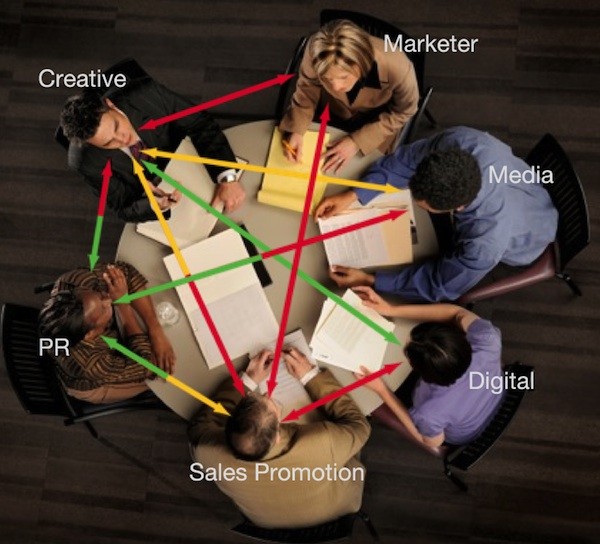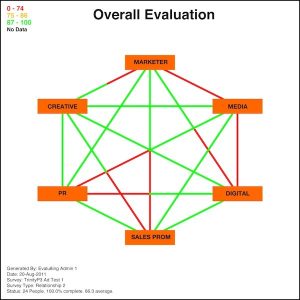With so many communications channels available, marketers are using a wider selection of service providers and requiring them to work closer together to provide a consistent brand communication.
Some marketers are achieving this through placing all of their marketing communication requirements with one provider of one communications group, with mixed results.
But more are choosing to select the best of breed in each category and then manage this themselves.
Marketers are finding themselves managing an increasing number of specialist service providers and struggling to achieve the level of collaboration and alignment they need.
In her 2004 Strategy & Leadership paper “Collaboration with other firms and customers: innovation’s secret weapon”, Bettina von Stamm identified the five key requirements for having competitive companies work together:
1. Clear and well communicated rationale for collaboration
No matter how much people talk about being “committed” to the collaboration process, each of the companies working with you are competing with each other for a share of your budget. By maximising the share they can increase their revenue and profit. Therefore, the first step is to clearly articulate the objectives of the collaboration and define what success would look like with all participants.
2. Clear rules of engagement
One of the difficulties is that many agencies and other services providers maintain they provide a “full service” offering to their clients. Therefore when working with a group of similar companies there is often disagreement with who is best to provide or manage each of the various services required. To overcome this the advertiser needs to clearly define the services required and delegate the tasks to each party, with a defined process for making changes to these arrangements when required.
Evalu8ing has the flexibility to allow marketers to measure performance, relationship and collaboration across multiple complex interactions in one simple survey.
3. A win-win deal for all parties
One of the key drivers or measures of competition is remuneration. For collaboration to work the remuneration model should ensure that all parties win. Many remuneration models being resource or head hour based actually reward participants who are task or production focused and penalise those who are strategic or planning focused, where often real value is created. Often a remuneration model based on performance or results will overcome this issue.
4. Senior management support
When setting the scope of the collaboration, the terms and benefits of working together and agreeing the remuneration models, it is essential to garner senior management support in each of the organisations. Most marketers do this, but what they then fail to ensure is that this support is on-going, with all of the participating senior management meeting on a regular basis to discuss issues and look for ways to improve the collaborative process.
5. A focus on people not technology
Email has become one of the most common ways we communicate, yet it is increasingly the least effective way of collaborating. Effective collaboration requires effective communication and interaction. The focus should be on getting people together to discuss, share and explore ideas and opportunities. While this can be costly in time and difficult to schedule and manage, it is still an essential factor for realising the maximum value from the collaborative process.
Achieving a collaborative environment
While agency search, contracts and remuneration are a major part of the work TrinityP3 undertakes, much of the time we are now working with advertisers using our experience, expertise, tools and methodology to help foster a collaborative environment between the many marketing communication service providers they engage, including creative and media agencies, public relations, digital, direct marketing, experiential, word of mouth, promotional marketing and the like.
These includes:
Engagement Agreements – to set rules of engagement between the various stakeholders within the clients organisation and with their various agencies and service providers.
Remuneration / Compensation Assessments and Modelling – to develop a model that encourages collaboration and rewards the agencies with a win-win for all.
Evalu8ing System – to measure, manage and maximise the performance, relationships and collaboration between the various teams within the clients organisation and with their various agencies and service providers.
What are you doing to encourage collaboration and alignment within your organisation and with your agencies and external service providers?





